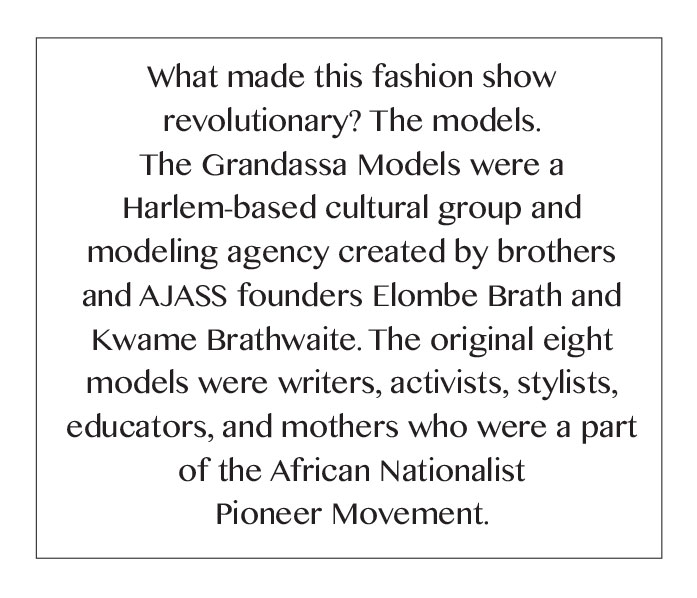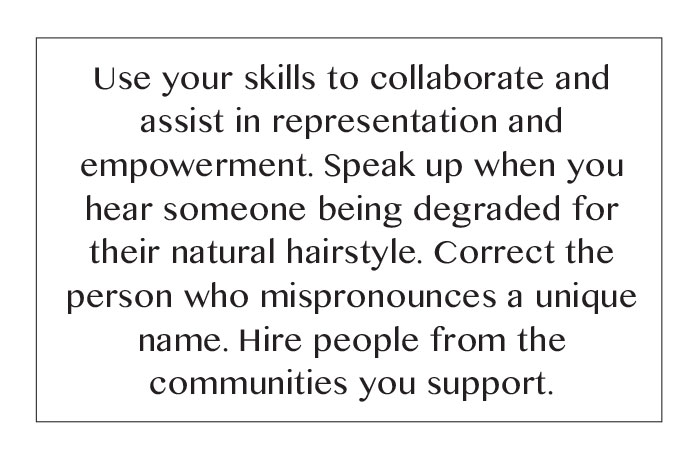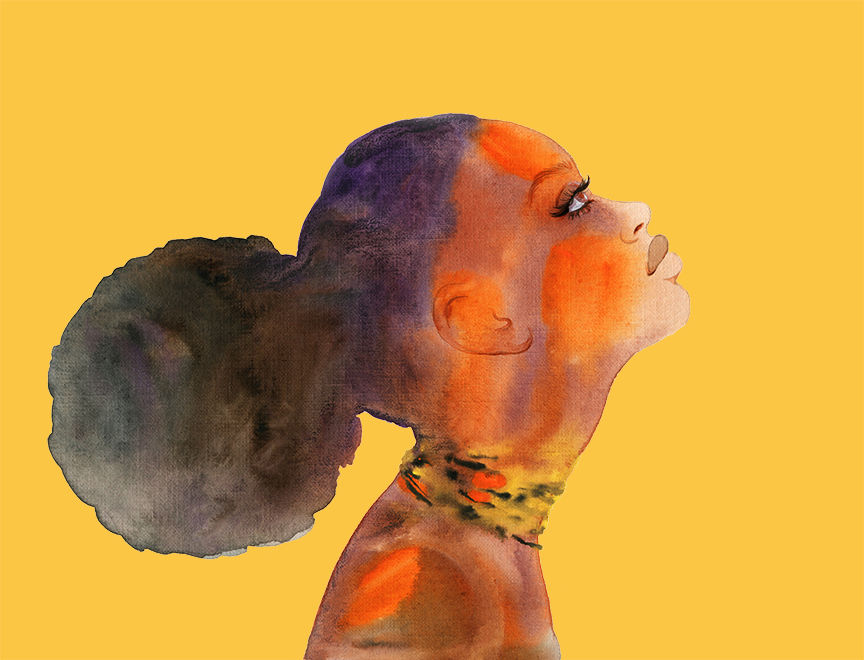Since the writing of this post, Congress has passed the Crown Act banning discrimination against Black hairstyles. It is important to note that even during this process opponents suggested that this discussion in the halls of Congress was frivolous and a “distraction from important matters that impact the American people”. This is similar language our own agency has encountered in marketing discussions with industry heads – that DEI is a “distraction from more important issues, such as what is needed to increase financial and employment security” of whatever organization they represent. We want to point out that issues surrounding DEI, human rights, and the advocacy for the protection and dignity of all is very much in line with a brand’s, organization’s and destination’s success – whether financially or otherwise. The dismissal of these conversations as “frivolous and unimportant” is the worst of takes, especially during a time when it is what matters most to so many in this evolving society we serve. To dismiss the need for action in areas of DEI and representation is to remain stagnant in ideologies and practices that are no longer in line with current trends and societal priorities. – Carol Cain, Principal and Founder, Brave World Media.
Black is Beautiful is more than an uplifting slogan, it’s a rallying call to action. The Black is Beautiful Movement was created in New York City by the African Jazz Art Society and Studios (AJASS) and was popular alongside the Civil Rights and Black Power movements. The AJASS was a group of Black jazz musicians, artists, and models with the goal to help push the Black Nationalist Movement forward. On January 28, 1962, the AJASS held a fashion show in Harlem that would forever change American and Black History.
To promote the original event fliers and posters were created with the slogan “Black is Beautiful” boldly printed on them. Which was a very provocative statement at the time. The event was called “Naturally ’62” and was intended to promote African culture and fashion. It was held in the basement of a popular nightclub, Harlem’s Purple Manor. The event was so popular that the producers hosted an impromptu encore performance later that night for those who missed the first show.

What made this fashion show revolutionary? The models. The Grandassa Models were a Harlem-based cultural group and modeling agency created by brothers and AJASS founders Elombe Brath and Kwame Brathwaite. The original eight models were writers, activists, stylists, educators, and mothers who were a part of the African Nationalist Pioneer Movement. They rejected European beauty standards instead embracing their natural textured hair with afros and natural beauty wearing no makeup. Their voluptuous bodies were covered in vibrant clothes created by local fashion designers and inspired by designs from Lagos, Accra, and Nairobi.
After the success of the first event, AJASS began to host “Naturally” shows annually and ventured into other U.S. cities like Chicago and Detroit. These sold-out shows helped to elevate the public perception of Black beauty. Showing Black models in elegant, high-end looks was something the Black community could take pride in. Eventually, these events started to bring in celebrity spectators. Blues singer Bobby “Blue” Bland invited the Grandassa Models to open for him at the Apollo Theater. Singer and activist Nina Simone and jazz musician Miles Davis are two supporters of the movement who talked about the Pro-Black “Naturally” events at their concerts.
Kwame Brathwaite was not only the co-founder of AJASS and Grandassa Models, he was a photographer. Throughout the 1950s, ’60s, and ’70s, Brathwaite photographed many famous Black musicians, including Stevie Wonder and Bob Marley. His rise in popularity as a celebrity photographer also resulted in more exposure for his “Naturally” events and the movement.
Black is Beautiful didn’t stay within the walls of the Purple Manor. The phrase was chanted at rallies and became a political mantra for the Black Panther Party. The Black is Beautiful movement was also tied to the Black Power and Black Arts Movements. This is during the same time you could hear James Brown singing “I’m Black and I’m Proud” or see pieces like “Negro Es Bella” by artist Elizabeth Cartlett.
During the Mad Men era, the advertising industry was predominantly run by white men. Caroline R. Jones was a pioneering black woman in advertising. Her career began in New York in 1963 as a secretary and copywriter trainee at J. Walter Thompson. She eventually became the first Black senior copywriter at one of the leading advertising firms in the nation. While there she developed a hair campaign based on the idea that Black women shouldn’t have to conform to Eurocentric beauty standards.
Caroline R. Jones’ work within the advertising industry is the embodiment of the Black is Beautiful Movement and an example of how advertising and marketing agencies should be held responsible for making ads that are representative and as diverse as the population that’s being advertised to. Inclusive, diverse marketing doesn’t have to be relegated to one month. This work can be done and this message should be shared in everything created.
Since ‘62 there’s been a fight to show that Black hair in its natural state is beautiful, professional, and worthy of acceptance. In ‘22 organizations like The Crown Act are still working to make it legal in all states for Black people to be able to wear their natural hair to work and school. So far it’s only legal in 14 states, there are still 36 to go! In headlines from the last few years, you will see stories of a referee cutting a wrestler’s dreads during a tournament in order for him to compete. Olympic athletes were banned from wearing swim caps in order to protect their natural tresses. And a Texas student was told he wouldn’t be able to walk in graduation or go to senior prom unless he cut his dreads. In a country that’s quick to quote the Constitution, freedom of religion should be respected and people should be aware that dreads are a religious hairstyle for some.
There are many ways to show support to the Black Community and marginalized communities in general. Elombe Brath and Kwame Brathwaite created great examples of tapping into your social network with AJASS and Grandassa Models. Creating a community for like-minded individuals allows everyone to showcase their talents. Another option is utilizing the platform you have, like Caroline R. Jones who promoted the ideals through advertising, or Nina Simone who spread the message through word of mouth at her concerts.

Use your skills to collaborate and assist in representation and empowerment. Speak up when you hear someone being degraded for their natural hairstyle. Correct the person who mispronounces a unique name. Hire people from the communities you support.
Finally, you can start challenging the social status quo, especially in professional, social, and educational environments. All of which have systematically oppressed People of Color. Use your skills to collaborate and assist in representation and empowerment. Speak up when you hear someone being degraded for their natural hairstyle. Correct the person who mispronounces a unique name. Hire people from the communities you support.
Rihanna revealed to Vogue that a 1964 studio portrait of Grandassa Model Nomsa Brathwaite in a headwrap was the inspiration for a recent Fenty collection. It’s incredible to think that a rebellious fashion show can start a social revolution. Elombe Brath and Kwame Brathwaite and the other pioneer members of the AJASS are just one reason why we celebrate Black History all year long.


